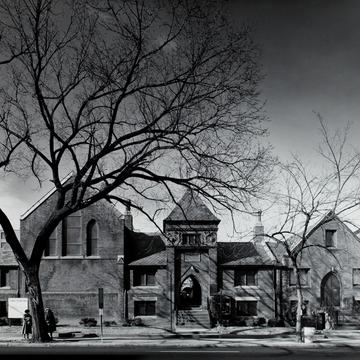This little-known architectural treasure was designed by James Renwick, Jr., who undertook the church for an African-American congregation. In order to reduce costs, Renwick modified his original plans, lowering walls, simplifying the roof truss, and omitting much decorative detail. Within the restricted budget and the requirement that the church, offices, and living quarters be placed on the perimeter of the site, Renwick provided an ensemble of red brick Gothic buildings and connecting walls. The low lines of the facade are accented by the picturesque tower with its well-proportioned entrance. A central courtyard unites the elements of the ensemble. The overall massing of gables and towers, embellished with terracotta panels and stained-glass windows, provides a pleasing picturesque effect.
You are here
Saint Mary's Episcopal Church
If SAH Archipedia has been useful to you, please consider supporting it.
SAH Archipedia tells the story of the United States through its buildings, landscapes, and cities. This freely available resource empowers the public with authoritative knowledge that deepens their understanding and appreciation of the built environment. But the Society of Architectural Historians, which created SAH Archipedia with University of Virginia Press, needs your support to maintain the high-caliber research, writing, photography, cartography, editing, design, and programming that make SAH Archipedia a trusted online resource available to all who value the history of place, heritage tourism, and learning.










